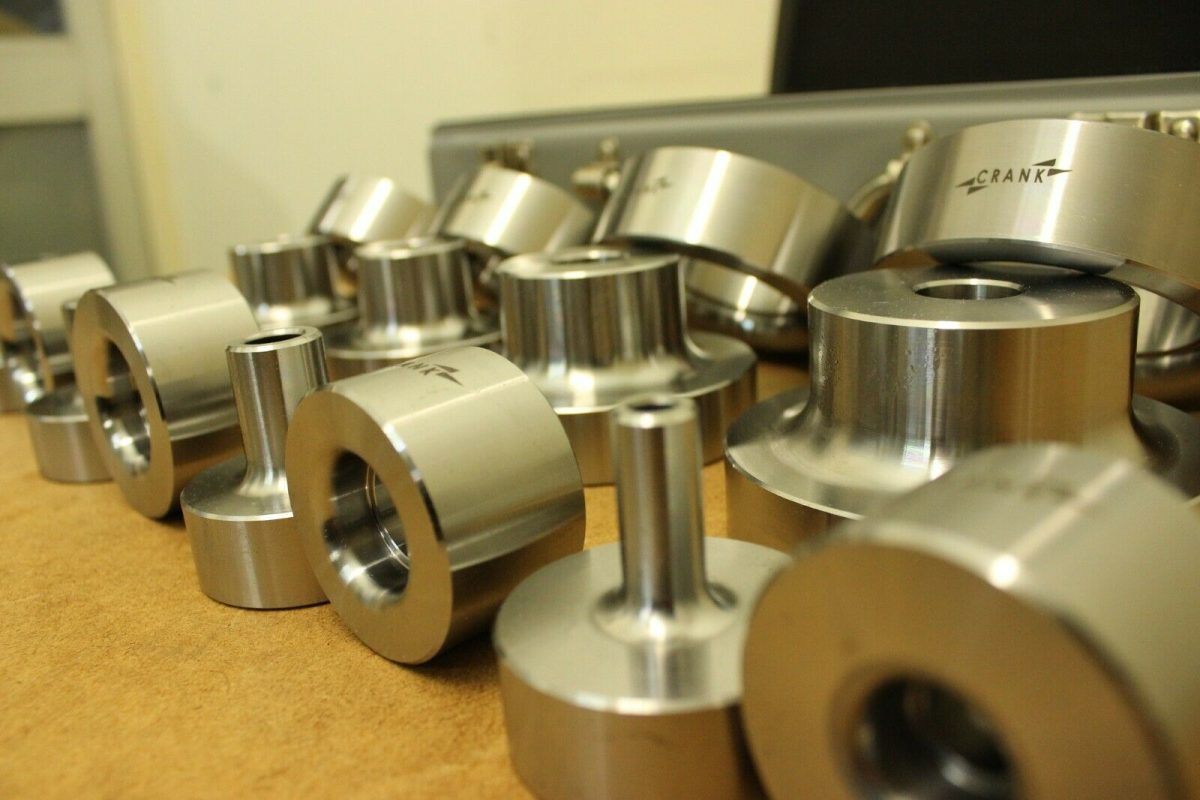Welcome to the comprehensive guide to dimple dies, essential tools for transforming sheet metal. Whether you’re aiming to strengthen a race car chassis, enhance the aesthetics of metal panels, or explore innovative fabrication techniques, this guide provides the knowledge you need to elevate your metalworking skills. Prepare to master the art of metal shaping with precision and flair.
Understanding Dimple Dies
Dimple dies are specialized tools that enhance metalwork by creating small indentations, or dimples, around pre-drilled holes. These dimples aren’t merely decorative; they significantly reinforce the metal, boosting its rigidity and resistance to bending or buckling under pressure. This allows for the use of thinner, lighter sheet metal without compromising structural integrity – a crucial advantage in weight-sensitive applications like automotive and aerospace design. Beyond the functional benefits, dimples can also enhance airflow, improve heat dissipation, and add a touch of visual flair.
How Dimple Dies Work
The process is straightforward, involving a pair of tools: a punch (a cone-shaped stamp) and a die (its matching mold). After drilling a hole in the metal sheet, it’s placed between the punch and die. Applying force with a hydraulic press or manual dimple die kit presses the metal into the die cavity, forming the dimple.
- Pilot Hole Prep: Use a step drill or hole saw to create a pilot hole at each dimple location.
- Die Positioning: Carefully align the pilot hole with the dimple die, placing the sheet metal between the punch and die sections.
- Apply the Pressure: Use a hydraulic press or manual kit to apply even pressure, forming the dimple.
Exploring Dimple Die Types
Just as different projects require different tools, dimple dies come in various sizes and shapes to accommodate varying hole diameters and material thicknesses. They’re often sold individually or in sets to cater to a range of needs. Dies are categorized by the hole diameter they create; for example, a 1-inch dimple die uses a 1-inch hole, resulting in a flare slightly larger than the hole itself. Punch-and-flare sets combine the hole-cutting and flaring operations into a single step. Choosing the right die hinges on factors like metal thickness and project requirements. Most dies can handle up to 3/16″ thick metal (steel or aluminum), but an optimal range for steel is typically around 10-11 gauge (approximately 1/8″).
Applications Across Industries
Dimple dies are versatile tools with applications spanning numerous fields:
- Automotive: Reinforcing chassis components, joining panels seamlessly, and securing fasteners are just a few examples of their use in the automotive industry. Dimple dies contribute to stiffer, more resistant vehicle structures.
- Aerospace: Lightweighting is paramount in aerospace, and dimple dies provide a solution by reducing weight without compromising structural integrity, leading to improved fuel efficiency and performance.
- Fabrication and Customization: From enhancing the strength of custom metalwork to adding aesthetic details to architectural features and artistic pieces, dimple dies offer both structural and visual benefits.
Choosing and Using Dimple Dies Effectively
Selecting the right dimple die and employing proper techniques are essential for successful results:
- Material Selection: While dimple dies work with various metals (steel, aluminum, etc.), material properties influence the final outcome.
- Thickness and Hole Size: Match the die size to your pilot hole and consider the metal thickness. Using the wrong die can compromise the quality of the dimples.
- Advanced Techniques: Exploring techniques for complex patterns, curved surfaces, and specialized die designs opens up possibilities for advanced fabrication.
- Cost-Benefit Analysis: Investing in quality dies, like those made from 4130 chromoly steel, offers long-term value through durability and improved results. Balance the equipment cost with the potential long-term savings from weight reduction.
Pro Tips:
- Alignment is Key: Ensure precise punch and die alignment for consistent dimple depth.
- Experiment with Patterns: Strategic dimple placement maximizes the strengthening and airflow benefits.
- Maintenance Matters: Clean and lubricate your dies to extend their lifespan.
- Safety First: Always wear appropriate safety gear, including eye protection and gloves.
The Science of Strength Enhancement
The strength-enhancing power of dimple dies lies in the transformation of 2D sheet metal into a 3D structure. This added geometry—specifically, the flared lip around the dimple—increases resistance to bending and buckling. The flare compensates for material removed during the process by distributing stress more efficiently. This science of enhancing strength while reducing weight is continuously being refined through ongoing research. Some experts are using finite element analysis (FEA) and exploring the impact of dimple shape, depth, and material properties like gauge (a measurement of weight, not strictly thickness) on performance.
Troubleshooting and Advanced Considerations
Consider these points for optimal outcomes: If you encounter inconsistent dimples, double-check your alignment, die selection, and pressure application. For very thick metals, you might need specialized dies or equipment. Different flaring techniques, such as stretch forming, can offer unique benefits for certain applications.
The Future of Dimple Dies
Ongoing research and development suggest exciting possibilities for the future of dimple dies. New materials and designs could lead to even stronger, more durable dies with enhanced versatility. The exploration of advanced dimpling techniques, like those involving complex patterns or curved surfaces, could expand the possibilities of metal fabrication.
Wrapping Up
Dimple dies are invaluable tools for achieving precision, strength, and artistry in metalworking. By understanding their function, selecting the right die, and mastering the techniques, you can transform your projects and achieve remarkable results. So, explore, experiment, and discover the transformative power of these remarkable metal-shaping tools. As you refine your skills, you might even consider enhancing your personal style with a double cartilage piercing for a touch of edginess. And don’t forget to maintain a healthy smile with regular dental prophy appointments to keep your teeth in top condition.
What is the Purpose of a Dimple Die?
Dimple dies serve multiple purposes, primarily strengthening sheet metal, reducing weight, and enhancing aesthetics. They achieve this by creating small, indented dimples, often around existing holes. These dimples act as reinforcements, increasing the metal’s resistance to bending and buckling under pressure, allowing the use of thinner, lighter materials without compromising structural integrity. This lightweighting is essential in applications where weight is a critical factor, such as in race cars or airplanes. Beyond structural benefits, dimples can also enhance airflow and heat dissipation, as seen in brake rotors and heat sinks. Additionally, dimples can add a visually appealing texture to metal surfaces, enhancing the aesthetics of various products.
Key Advantages:
| Benefit | Explanation |
|---|---|
| Increased Strength | Dimples reinforce the metal, enhancing resistance to bending and buckling. |
| Reduced Weight | Using thinner gauge materials due to increased strength leads to overall weight savings. |
| Improved Airflow | Dimples can channel airflow, which can improve cooling and aerodynamics. |
| Better Heat Transfer | Increased surface area aids in heat dissipation. |
| Enhanced Aesthetics | Dimples add a visually appealing texture to metal surfaces. |
Ongoing research explores optimizing dimple shapes, placement, and depth for specific applications. The arrangement of dimples can significantly affect their effectiveness, and new materials and manufacturing techniques are constantly being developed to improve the dimpling process. Dimpled structures are commonly found in automotive, aerospace, and architectural metalwork, demonstrating their widespread utility. However, it’s important to remember that dimpling is not a universal solution. The specific design and application of dimples depend on various factors, including the material, load-bearing requirements, and overall design goals. The field of dimple die technology is likely to continue evolving with new research and applications.
Does Dimple Die in S3? (Mob Psycho 100)
Dimple’s journey in Mob Psycho 100 Season 3 is a complex and transformative one, culminating in a sacrifice that ultimately leads to his redemption. Initially a manipulative spirit aiming to control Mob, Dimple undergoes significant character development throughout the series. In Season 3, he faces a critical choice: save himself or save Mob. He chooses Mob, shielding him from Psycho Helmet’s attack and seemingly disintegrating.
However, Dimple’s presence lingers even after his “death.” Mob’s struggle with his absence showcases their deep connection and contributes to his emotional instability and escalating powers. In the season finale, Dimple dramatically returns, possessing Reigen to reach Mob and help him regain control. In a surprising turn of events, Dimple appears whole and reformed at Reigen’s birthday party, suggesting a rebirth facilitated by Mob’s desire and Dimple’s own will.
| Season | Dimple’s Role | Key Events |
|---|---|---|
| 1 | Manipulative, seeks to control Mob | Attempts to form a following |
| 2 | Begins to show genuine concern for Mob | Supports Mob against other espers |
| 3 | Selfless protector, sacrifices himself | Returns in a reformed state to help Mob |
Dimple’s story is not just about survival; it’s about transformation. He evolves from a selfish manipulator to a selfless protector, demonstrating the power of connection and the potential for change. While his true nature and the extent of his powers remain somewhat ambiguous, his journey is a compelling exploration of redemption and the complexities of interdimensional relationships. Further exploration of the Mob Psycho 100 universe might shed more light on his enigmatic nature, but for now, we can appreciate the profound change he undergoes.
Do Dimple Dies Increase Strength?
Dimple dies demonstrably increase the strength of materials, effectively transforming flat sheet metal into robust, three-dimensional structures. They achieve this by creating a small raised lip, or flare, around a punched hole. This 3D geometry stiffens the metal, increasing its resistance to buckling under pressure. The flare compensates for material removed during the dimpling process by distributing stress more evenly, preventing weak spots and strengthening the entire piece. This strengthening effect allows for the use of thinner sheet metal while maintaining structural integrity, leading to weight reduction—a significant advantage in industries like aerospace and automotive.
Here’s a breakdown of where dimple dies shine:
- Cars and Trucks: Dimple dies strengthen key components, improve panel joining, and reinforce fastener areas, leading to stiffer, more resistant vehicle structures.
- Planes and Rockets: In aerospace, where weight is crucial, dimple dies enable the construction of lighter aircraft without sacrificing strength, resulting in improved fuel efficiency.
- Metal Fabrication – Beyond the Basics: Dimple dies not only enhance functionality but also add aesthetic appeal to custom metalwork, architectural details, and artistic pieces.
Steps for Using Dimple Dies:
- Plan Your Dimple Layout: Strategically plan the placement of your dimples before you begin.
- Pick the Perfect Die: Choose a die that matches your hole size and material thickness.
- Pilot Hole Prep: Create pilot holes using a step drill or hole saw.
- Die Positioning: Align the pilot holes with the die and place the sheet metal between the punch and die sections.
- Apply the Pressure: Use a hydraulic press or manual kit to apply even pressure and form the dimples.
Safety First: Always wear appropriate safety gear, including gloves, eye protection, and earplugs, when working with dimple dies and power tools.
Ongoing research continues to explore the science of dimpling, focusing on optimizing dimple placement, geometry, and material interaction. The shape and depth of the dimple, as well as the material’s response to dimpling, are areas of active investigation. While the general principles of how dimples enhance strength are established, research suggests that our understanding of their potential is constantly evolving.
- Weight Loss Supplements That Work and Those That Dont - October 31, 2025
- Male Eating Disorders Often Missed but Increasingly Prevalent - October 29, 2025
- Males With Anorexia Nervosa Have Distinct Symptoms and Treatment Needs - October 28, 2025










